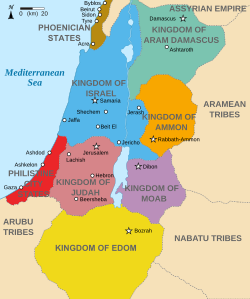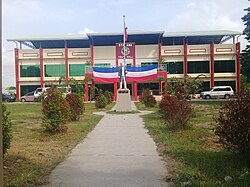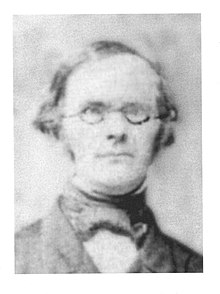아람다마스쿠스
Aram-Damascus아람-다마스쿠스 왕국 | |||||||||
|---|---|---|---|---|---|---|---|---|---|
| c. 기원전 12세기 ~ 기원전 732년 | |||||||||
 기원전 830년경 아람-다마스쿠스가 녹색인 지역 | |||||||||
| 자본의 | 다마스쿠스 | ||||||||
| 공통 언어 | 고대 아람어 | ||||||||
| 종교 | 고대 셈교 | ||||||||
| 디노미네임 | 아람어 | ||||||||
| 왕 | |||||||||
• 기원전 885년–865년 | 벤 하다드 1세 | ||||||||
• 기원전 865-842년 | 벤하다드 2세 | ||||||||
• 기원전 842년–796년 | 하자엘 | ||||||||
• 기원전 796년 ~ 기원전 792년 | 벤하다드 3세 | ||||||||
• 기원전 754년-732년 | 재진 (마지막) | ||||||||
| 역사 | |||||||||
• 설립 | c.기원전 12세기 | ||||||||
• 아시리아 정복 | 기원전 732년 | ||||||||
| |||||||||
| 오늘의 일부 | 시리아 조던 이스라엘 레바논 | ||||||||
아람-다마스쿠스 왕국(/ærr dm dæméskss/)은 기원전 12세기 후반부터 기원전 732년까지 존재했던 아람 왕국으로, 남부 [1]레반트의 다마스쿠스를 중심으로 형성되었다.다양한 부족 영토와 함께, 말년에 북쪽은 아시리아, 남쪽은 암몬, 서쪽은 이스라엘에 의해 경계되었다.
역사
히브리어 성경은 주로 이스라엘 및 유다와의 교류에서 아람-다마스쿠스의 역사를 설명하고 있다.기원전 [2]10세기 다윗 치하의 이스라엘 왕국과 남부 시리아에서 시리아인 사이의 전투를 언급하는 성경 문서들이 있다.
기원전 9세기에 하자엘은 아시리아인들과 싸웠고, 북부 시리아 운키에 약간의 영향력을 미쳤으며,[3][4] 이스라엘을 정복했다.
남서쪽으로, 아람-다마스쿠스는 골란 대부분에서 갈릴리해에 [5]닿았다.
기원전 8세기에 레진은 [6]아시리아의 왕 티글라스-필레세르 3세의 지류였다.기원전 732년, 그는 이스라엘의 왕 페카와 동맹을 맺고 유다의 왕 아하스를 공격했다. 아하스는 유다가 [7]조공을 바친 후 아시리아 왕이 제공한 티글라스-필레세르 3세에게 도움을 요청했다.그 후 티글라스-필레세르 3세는 다마스쿠스를 공격하고 [6]아람을 합병했다.왕국의 인구는 추방되었고 레진은 처형되었다.티글라스-필레세르 3세는 그의 [8]비문 중 하나에 이 행위를 기록했다.
킹스
| 시리아인 |
|---|
| Syro-Hittite 상태 |
| 시리아 왕 |
| 시리아 도시 |
| 원천 |
- 벤하다드 1세, 기원전 885-865년
- 벤하다드 2세, 기원전 865-842년
- 하사엘, 842–805/796 BCE
- 벤하다드 3세, 기원전 796년-792년
- 레진, 기원전 754년 ~ 기원전 732년
「 」를 참조해 주세요.
레퍼런스
- ^ Pitard, Wayne T. (2000). "Arameans". In David Noel Freedman; Allen C. Myers; Astrid B. Beck (eds.). Eerdmans Dictionary of the Bible. Wm. B. Eerdmans Publishing Co. p. 86.
- ^ "2 Samuel 10:6-19". Bible. Holman. ASIN B000MX2BZM. ISBN 978-0999989265.
- ^ 제임스 B.Pritchard, ed., 구약성서에 관한 고대 근동 문서 (제3판)Princeton NJ: Princeton University Press, 1955년) 246.
- ^ "2 Kings 13:3". Bible (Christian Standard ed.). Holman. ISBN 978-0999989265.
- ^ Suzanne Richard (2003). Near Eastern Archaeology: A Reader (Hardcover ed.). Eisenbrauns. p. 377. ISBN 1-57506-083-3.
- ^ a b 레스터 L. 그래브, 고대 이스라엘: 델은 무엇을 알고 어떻게 알고 있는가? (뉴욕: T&T Clark, 2007) : 134
- ^ "2 Kings 16:7-9". Bible (Christian Standard ed.). Holman. ISBN 978-0999989265.
- ^ 제임스 B.Pritchard, ed., 구약성서에 관한 고대 근동 문서 (제3판)Princeton NJ: Princeton University Press, 1969년) 283.
원천
- Amadasi-Guzzo, Maria Giulia (2019). "What Do We Know about the Borders and Exchanges between Aram and Phoenicia in the 9th–8th Centuries B.C.E. in Anatolia and Syria?". Aramaean Borders: Defining Aramaean Territories in the 10th–8th Centuries B.C.E. Leiden-Boston: Brill. pp. 149–171.
- Bagg, Ariel M. (2019). "At the Limits of Historical Geography: Reconstructing Aramaean Territories in the West According to the Neo-Assyrian Written Sources". Aramaean Borders: Defining Aramaean Territories in the 10th–8th Centuries B.C.E. Leiden-Boston: Brill. pp. 1–25.
- Edmonds, Alexander J. (2019). "A People without Borders? Tracing the Shifting Identities and Territorialities of the Ahlameans". Aramaean Borders: Defining Aramaean Territories in the 10th–8th Centuries B.C.E. Leiden-Boston: Brill. pp. 26–62.
- Gzella, Holger (2015). A Cultural History of Aramaic: From the Beginnings to the Advent of Islam. Leiden-Boston: Brill.
- Lipiński, Edward (2000). The Aramaeans: Their Ancient History, Culture, Religion. Leuven: Peeters Publishers.
- Lipiński, Edward (2013). "The Aramaeans in the West (13th–8th centuries)". Arameans, Chaldeans, and Arabs in Babylonia and Palestine in the First Millennium B.C. Wiesbaden: Harrassowitz Verlag. pp. 123–147.
- Lemaire, André (2019). "The Boundary between the Aramaean Kingdom of Damascus and the Kingdom of Israel". Aramaean Borders: Defining Aramaean Territories in the 10th–8th Centuries B.C.E. Leiden-Boston: Brill. pp. 245–266.
- Sader, Hélène (2014). "History". The Aramaeans in Ancient Syria. Leiden: Brill. pp. 11–36.
- Younger, Kenneth Lawson (2016). A Political History of the Arameans: From Their Origins to the End of Their Polities. Atlanta: SBL Press.
- Zwickel, Wolfgang (2019). "Borders between Aram-Damascus and Israel: A Historical Investigation". Aramaean Borders: Defining Aramaean Territories in the 10th–8th Centuries B.C.E. Leiden-Boston: Brill. pp. 267–335.



